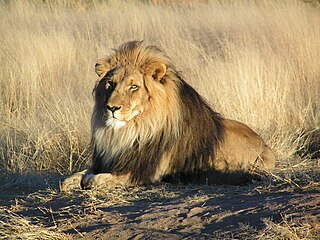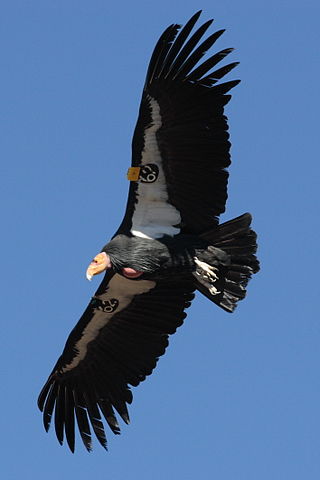Related Research Articles

The moose or elk is the world's tallest, largest and heaviest extant species of deer and the only species in the genus Alces. It is also the tallest, and the second-largest, land animal in North America, falling short only of the American bison in body mass. Most adult male moose have broad, palmate antlers; other members of the deer family have pointed antlers with a dendritic ("twig-like") configuration. Moose inhabit the circumpolar boreal forests or temperate broadleaf and mixed forests of the Northern Hemisphere, thriving in cooler, temperate areas as well as subarctic climates.

The hippopotamus, also shortened to hippo, further qualified as the common hippopotamus, Nile hippopotamus, or river hippopotamus, is a large semiaquatic mammal native to sub-Saharan Africa. It is one of only two extant species in the family Hippopotamidae, the other being the pygmy hippopotamus. Its name comes from the ancient Greek for "river horse" (ἱπποπόταμος).

The greater kudu is a large woodland antelope, found throughout eastern and southern Africa. Despite occupying such widespread territory, they are sparsely populated in most areas due to declining habitat, deforestation, and poaching. The greater kudu is one of two species commonly known as kudu, the other being the lesser kudu, T. imberbis.
Coextinction and cothreatened refer to the phenomenon of the loss or decline of a host species resulting in the loss or endangerment of another species that depends on it, potentially leading to cascading effects across trophic levels. The term was originated by the authors Stork and Lyal (1993) and was originally used to explain the extinction of parasitic insects following the loss of their specific hosts. The term is now used to describe the loss of any interacting species, including competition with their counterpart, and specialist herbivores with their food source. Coextinction is especially common when a keystone species goes extinct.

Wildlife crossings are structures that allow animals to cross human-made barriers safely. Wildlife crossings may include underpass tunnels or wildlife tunnels, viaducts, and overpasses or green bridges ; amphibian tunnels; fish ladders; canopy bridges ; tunnels and culverts ; and green roofs.

Grévy's zebra, also known as the imperial zebra, is the largest living wild equid and the most threatened of the three species of zebra, the other two being the plains zebra and the mountain zebra. Named after Jules Grévy, it is found in parts of Kenya and Ethiopia. Superficially, Grévy's zebras' physical features can help to identify it from the other zebra species; their overall appearance is slightly closer to that of a mule, compared to the more "equine" (horse) appearance of the plains and mountain zebras. Compared to other zebra species, Grévy's are the tallest; they have mule-like, larger ears, and have the tightest stripes of all zebras. They have distinctively erect manes, and more slender snouts.

An apex predator, also known as a top predator, is a predator at the top of a food chain, without natural predators of its own.

The ecological restoration of islands, or island restoration, is the application of the principles of ecological restoration to islands and island groups. Islands, due to their isolation, are home to many of the world's endemic species, as well as important breeding grounds for seabirds and some marine mammals. Their ecosystems are also very vulnerable to human disturbance and particularly to introduced species, due to their small size. Island groups, such as New Zealand and Hawaii, have undergone substantial extinctions and losses of habitat. Since the 1950s several organisations and government agencies around the world have worked to restore islands to their original states; New Zealand has used them to hold natural populations of species that would otherwise be unable to survive in the wild. The principal components of island restoration are the removal of introduced species and the reintroduction of native species.

Species richness, or biodiversity, increases from the poles to the tropics for a wide variety of terrestrial and marine organisms, often referred to as the latitudinal diversity gradient. The latitudinal diversity gradient is one of the most widely recognized patterns in ecology. It has been observed to varying degrees in Earth's past. A parallel trend has been found with elevation, though this is less well-studied.

The banded palm civet, also called the banded civet, is a viverrid native to Indomalaya. They primarily inhabit lowland conifer habitat, which is under threat from encroaching human activity. It is estimated the population of the banded palm civet has decreased by around 30% in just three generations. Banded palm civets are usually approximately the size of a domestic cat; their fur is pale but with dark bands on the back. They are believed to be closely related to Hose's palm civets, which are similar in appearance and distribution.

The Indian grey mongoose or Asian grey mongoose is a mongoose species native to the Indian subcontinent and West Asia. It is listed as Least Concern on the IUCN Red List.
Graeme James Caughley was a New Zealand population ecologist, conservation biologist, and researcher. He combined empirical research with mathematical models, and supported the declining population paradigm.

A large proportion of living species on Earth live a parasitic way of life. Parasites have traditionally been seen as targets of eradication efforts, and they have often been overlooked in conservation efforts. In the case of parasites living in the wild – and thus harmless to humans and domesticated animals – this view is changing. The conservation biology of parasites is an emerging and interdisciplinary field that recognizes the integral role parasites play in ecosystems. Parasites are intricately woven into the fabric of ecological communities, with diverse species occupying a range of ecological niches and displaying complex relationships with their hosts.
Conservation is the maintenance of biological diversity. Conservation can focus on preserving diversity at genetic, species, community or whole ecosystem levels. This article will examine conservation at the species level, because mutualisms involve interactions between species. The ultimate goal of conservation at this level is to prevent the extinction of species. However, species conservation has the broader aim of maintaining the abundance and distribution of all species, not only those threatened with extinction. Determining the value of conserving particular species can be done through the use of evolutionary significant units, which essentially attempt to prioritise the conservation of the species which are rarest, fastest declining, and most distinct genotypically and phenotypically.
Colpocephalum californici, the California condor louse, is an extinct species of chewing louse which parasitized the California condor. In an example of coextinction, it became extinct when the remaining, Critically Endangered California condors were deloused and treated with pesticides during a captive breeding program.

Meghan Anne Duffy is an American biologist and the Susan S. Kilham Collegiate Professor of Ecology and Evolutionary Biology at the University of Michigan. She focuses on the causes and consequences of parasitism in natural populations of lake populations. In 2019, she created a task force to examine factors that influence the mental health and well-being of graduate students at the University of Michigan.
Rae Wynn-Grant is a large-carnivore ecologist and a fellow with National Geographic Society. She is best known for her research of the human impact on the behavior of black bears in Montana and is an advocate for women and people of color in the sciences.
Aimée Classen is an American ecologist who studies the impact of global changes on a diverse array of terrestrial ecosystems. Her work is notable for its span across ecological scales and concepts, and the diversity of terrestrial ecosystems that it encompasses, including forests, meadows, bogs, and tropics in temperate and boreal climates.

Anjali Watson is a Sri Lankan conservationist. She is known for her contributions to leopard conservation and founded the Wilderness and Wildlife Conservation Trust, a conservation and research organisation.
Amelia Jane Dickman is Professor of Wildlife Conservation and Director of WildCRU at the University of Oxford, Kaplan Senior Research Fellow at Pembroke College, Oxford and joint CEO of Lion Landscapes. She is best known for her leadership of the Ruaha Carnivore Project, seeking to improve conservation outcomes for lions and other carnivores in the Ruaha National Park of Tanzania. She is known for her views on the importance of scientific and local community input into discussions around the continued importance of trophy hunting for the conservation of African landscapes.
References
- 1 2 3 Shell, Lea. "Before They Were Scientists: Nyeema Harris". Your Wild Life. Retrieved 2020-09-15.
- 1 2 3 4 "Raccoons at the Dinner Table – The Mich". 16 April 2019. Retrieved 2020-09-15.
- ↑ "Briefly... CITY/REGION". Inquirer. 8 February 2010. Retrieved 2020-09-15.
- 1 2 "Nyeema Harris | PPFP". ppfp.ucop.edu. Retrieved 2020-09-15.
- ↑ Harris, Nyeema Charmaine (2007). Monitoring survival of young in ungulates: a case study with Rocky Mountain elk. OCLC 144513481.
- 1 2 3 "Fellows (2005 to 2015) | Diversity". diversity.berkeley.edu. Retrieved 2020-09-15.
- ↑ Harris, Nyeema Charmaine (2011). The Biogeography of Carnivore Hosts and their Parasites: Implications for Conservation in North America. OCLC 801968540.
- ↑ "PhD Candidate Nyeema Harris Awarded Philadelphia Zoo's Emerging Conservation Leader Award | College of Natural Resources". 22 January 2010. Retrieved 2020-09-15.
- ↑ "Science in Action: researching the performance of protected areas" (PDF). Luc Hoffman Institute. 2015. Retrieved 2020-09-15.
- ↑ "Nyeema Harris | U-M LSA Ecology and Evolutionary Biology (EEB)". lsa.umich.edu. Retrieved 2020-09-15.
- ↑ "Studying Wildlife in Urban Communities". issuu. Retrieved 2020-09-15.
- 1 2 3 "Human pressures on mammals in protected areas of West Africa". ScienceDaily. Retrieved 2020-09-15.
- ↑ Gadsden, Gabriel; Malhotra, Rumaan; Harris, Nyeema C. (2019-09-30). "Michigan Zoomin: Integrating Public Engagement in Carnivore Research". AFS.
{{cite journal}}: Cite journal requires|journal=(help) - ↑ "About-Black Ecologists Section".